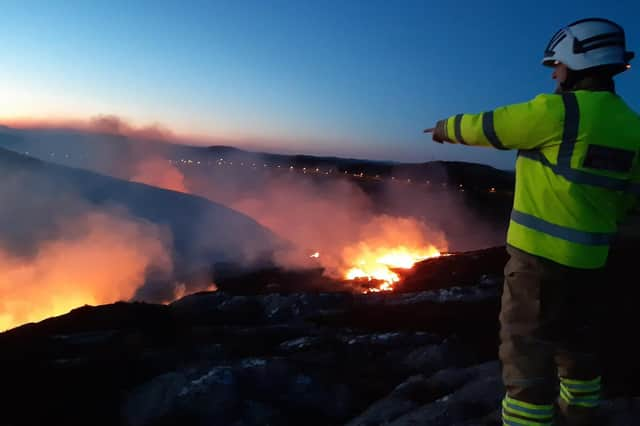Farming: Careful burning can help control wildfire risks


With the United Kingdom recording its hottest ever temperatures this week, wildfires wreaked havoc for fire crews in both rural and urban areas, with 440 wildfires reported across the UK.
And yesterday Scottish Land & Estates, which represents land managers and rural businesses, said now was the time for the Scottish Government to give its backing for the use of controlled burning to manage vegetation, a traditional practice which reduces the fuel load through which wildfires spread.
Advertisement
Hide AdAdvertisement
Hide AdThe organisation pointed to fire crews across continental Europe who were currently using controlled burning to introduce fire breaks and to TV clips of crews fighting ‘fire with fire’ in Spain, Portugal and France which had been seen in recent days.
“Muirburn, which is the controlled burning of heather and vegetation from autumn into spring, is already carried out in many areas of rural Scotland by land managers, gamekeepers and farmers and has been supported by the Scottish Fire & Rescue Service as a means of reducing wildfire risk,” said Ross Ewing, Moorland Director at SLE.
Stating that the past week’s heatwave demonstrated that Scotland was not immune from the effects of climate change and the associated bouts of extreme weather patterns he continued:
“The creation of tinderbox conditions enables wildfires to spread rapidly on dry ground that is thick with vegetation, endangering lives and property, as well as damaging the environment and landscape,” warned Ewing.
He said that the World Wildlife Fund had estimated that the massive wildfire in the Flow Country in 2019 which proved almost impossible to control had doubled Scotland's greenhouse gas emissions for the six days it burnt:
“That is the scenario we must take proactive steps to avoid in future,” he said.
Ewing explained that muirburn, which was undertaken during the cooler autumn and spring months, was a valuable land management tool which had been undertaken by skilled land managers for centuries.
“The Scottish Fire & Rescue Service has supported its use and we would like to see greater recognition from government about the role muirburn can play in future.”
Advertisement
Hide AdAdvertisement
Hide AdAnd, pointing to recent research at Cambridge University which had shown that infrequent, cooler fires could increase soil carbon retention through the formation of charcoal and soil aggregates which inhibited decomposition promoting increased carbon retention in soil, he said policymakers had to take this into account:
“We have a stark choice between wildfires which can burn deep into soils - including peatland - and emit huge amounts of carbon - or controlled burning that essentially singes the top layer of vegetation without damaging the soil below.
“There are many critics of muirburn, particularly those who do not like its association with grouse moor management, but the reality is that controlled burning should have a huge role to play in keeping rural Scotland safe for decades to come” concluded Ewing.
Comments
Want to join the conversation? Please or to comment on this article.